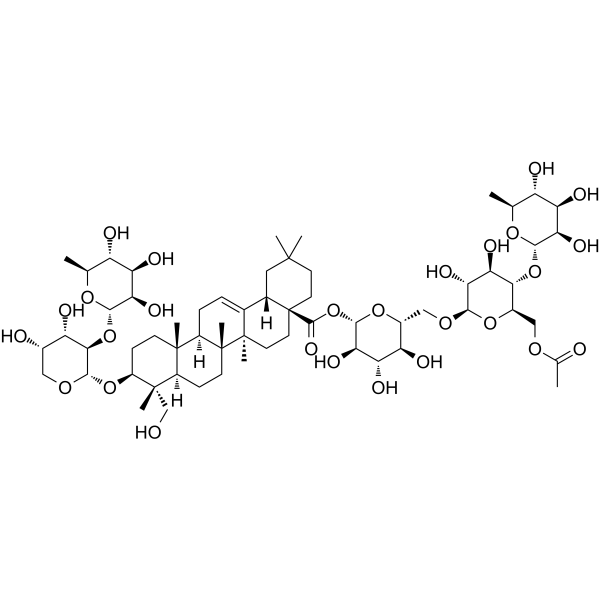
Kizuta saponin K11
CAS No. 97240-03-4
Kizuta saponin K11( —— )
Catalog No. M32230 CAS No. 97240-03-4
Kizuta saponin K11 is a saponin derived from Kalopanax pictum var. maximowiczii leaves, which is a widely used Korean medicinal plant.
Purity : >98% (HPLC)
 COA
COA
 Datasheet
Datasheet
 HNMR
HNMR
 HPLC
HPLC
 MSDS
MSDS
 Handing Instructions
Handing Instructions
| Size | Price / USD | Stock | Quantity |
| 5MG | 873 | In Stock |


|
| 50MG | Get Quote | In Stock |


|
| 100MG | Get Quote | In Stock |


|
Biological Information
-
Product NameKizuta saponin K11
-
NoteResearch use only, not for human use.
-
Brief DescriptionKizuta saponin K11 is a saponin derived from Kalopanax pictum var. maximowiczii leaves, which is a widely used Korean medicinal plant.
-
DescriptionKizuta saponin K11 is a saponin derived from Kalopanax pictum var. maximowiczii leaves, which is a widely used Korean medicinal plant.
-
In Vitro——
-
In Vivo——
-
Synonyms——
-
PathwayOthers
-
TargetOther Targets
-
Recptor——
-
Research Area——
-
Indication——
Chemical Information
-
CAS Number97240-03-4
-
Formula Weight1263.3
-
Molecular FormulaC61H98O27
-
Purity>98% (HPLC)
-
Solubility——
-
SMILES——
-
Chemical Name——
Shipping & Storage Information
-
Storage(-20℃)
-
ShippingWith Ice Pack
-
Stability≥ 2 years
Reference
molnova catalog



related products
-
Monoethyl itaconate
Monoethyl itaconate is a free radical can be used for polymerization.
-
WAY-298592
WAY-298592 is a small molecule used for high-throughput assays.
-
EGFRvIII peptide PEP...
PEPvIII, a peptide sequence from EGFRvIII, was designed to represent a target of glioma and is presented by MHC I/II complexes.



 Cart
Cart
 sales@molnova.com
sales@molnova.com


